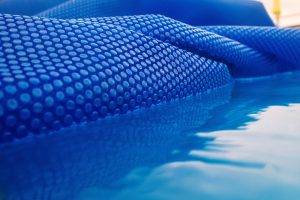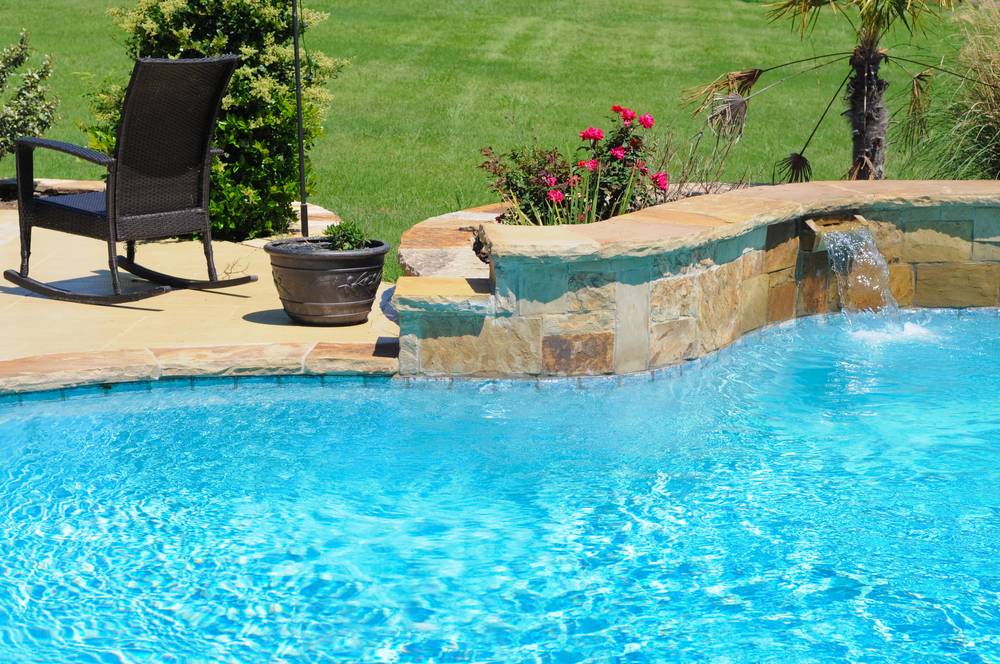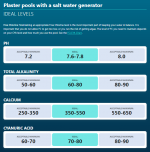- Mar 3, 2022
- 41
- Pool Size
- 10000
- Surface
- Plaster
- Chlorine
- Salt Water Generator
- SWG Type
- Hayward Turbo Cell (T-CELL-5)
Hey ya’ll. Newbie here who has done a massive amount of research on the forums trying to get it all right. I’ve run into a few pool builder challenges that threw my chems out of whack just when I almost had them perfect!
First off, I live in hot, dry Arizona and have a 10,000 gallon salt water inground pebble pool with a small raised spa with waterfall.
The only problem I’ve experienced with my water is a white scale build up on the tiles/grout. I brush every few days to keep that at bay but wowza it comes back in just one day. I can’t imagine that is normal. My PH is always high (new pool perhaps or the waterfall) so I’m adding about 1/4 gallon muriatic acid twice a week to keep it at bay. Salt water pool so no other chemicals really. Oddly enough, my FC is always high even with the SWG running at 30%. During initial start up I was told: keep it at 50%. FYI- I run filter on high for 4 hrs per day and low for 5 hrs per day. I was also told I would never need to shock my salt pool - so I haven’t. Pool was set up in late February.
With all that background info- here’s where I’m looking for help. We had a leak and the salt generator was out for a bit so we had to use chlorine tabs and things got thrown out of whack. We are back up and running and I decided to take a pool sample into Leslie’s for help. Perhaps this was my biggest mistake! Before that, my water was clear but I knew my chlorine was running high and I continue to get lots of the scaling on my tiles. I check my own Chems twice per week- FC, PH, TA. I’ve never checked the CYA or Calcium or Phosphorus on my own. I also purchased a salinity digital tester which puts my salt at 3800ppm (builder put a little too much in!).
Below are my current levels. With these, Leslie’s recommends I regularly shock the pool, bring down my FC with their product, increase my CYA with their conditioner and bring down my Phosphates using their NoPhos.
I’ve read our fabulous TFP forums and I know your feelings on the NoPhos - so - I do not plan to add that unless you disagree per my levels below. I also have turned my salt cell down a bit and hope to see my chlorine drop on its own. I’d rather not do that with chemicals (unless I have to?).
My questions:
1. Should I be adding shock every few weeks with a salt pool? Wouldn’t that just make my levels higher?
2. Do you agree that I should use conditioner to increase the CYA?
3. My salt generator is at 30%. With the Chlorine levels you see below, should I lower that? I also find it off that my CYA is low but my Chlorine is so high. I thought CYA is needed to keep chlorine in the pool. With CYA low, I’d assume chlorine would be low too.
4. Do you have any additional advice on how I can control the scale deposits based on my water chemistry below?
Free Chlorine: 6.3
Total Chlorine: 7.02
PH: 7.3
Total Alkalinity: 90
Calcium: 310
Cyanuric Acid: 40
Phosphates: 421
I’m so appreciative for any advice. Thank you so much!
Kim
First off, I live in hot, dry Arizona and have a 10,000 gallon salt water inground pebble pool with a small raised spa with waterfall.
The only problem I’ve experienced with my water is a white scale build up on the tiles/grout. I brush every few days to keep that at bay but wowza it comes back in just one day. I can’t imagine that is normal. My PH is always high (new pool perhaps or the waterfall) so I’m adding about 1/4 gallon muriatic acid twice a week to keep it at bay. Salt water pool so no other chemicals really. Oddly enough, my FC is always high even with the SWG running at 30%. During initial start up I was told: keep it at 50%. FYI- I run filter on high for 4 hrs per day and low for 5 hrs per day. I was also told I would never need to shock my salt pool - so I haven’t. Pool was set up in late February.
With all that background info- here’s where I’m looking for help. We had a leak and the salt generator was out for a bit so we had to use chlorine tabs and things got thrown out of whack. We are back up and running and I decided to take a pool sample into Leslie’s for help. Perhaps this was my biggest mistake! Before that, my water was clear but I knew my chlorine was running high and I continue to get lots of the scaling on my tiles. I check my own Chems twice per week- FC, PH, TA. I’ve never checked the CYA or Calcium or Phosphorus on my own. I also purchased a salinity digital tester which puts my salt at 3800ppm (builder put a little too much in!).
Below are my current levels. With these, Leslie’s recommends I regularly shock the pool, bring down my FC with their product, increase my CYA with their conditioner and bring down my Phosphates using their NoPhos.
I’ve read our fabulous TFP forums and I know your feelings on the NoPhos - so - I do not plan to add that unless you disagree per my levels below. I also have turned my salt cell down a bit and hope to see my chlorine drop on its own. I’d rather not do that with chemicals (unless I have to?).
My questions:
1. Should I be adding shock every few weeks with a salt pool? Wouldn’t that just make my levels higher?
2. Do you agree that I should use conditioner to increase the CYA?
3. My salt generator is at 30%. With the Chlorine levels you see below, should I lower that? I also find it off that my CYA is low but my Chlorine is so high. I thought CYA is needed to keep chlorine in the pool. With CYA low, I’d assume chlorine would be low too.
4. Do you have any additional advice on how I can control the scale deposits based on my water chemistry below?
Free Chlorine: 6.3
Total Chlorine: 7.02
PH: 7.3
Total Alkalinity: 90
Calcium: 310
Cyanuric Acid: 40
Phosphates: 421
I’m so appreciative for any advice. Thank you so much!
Kim




